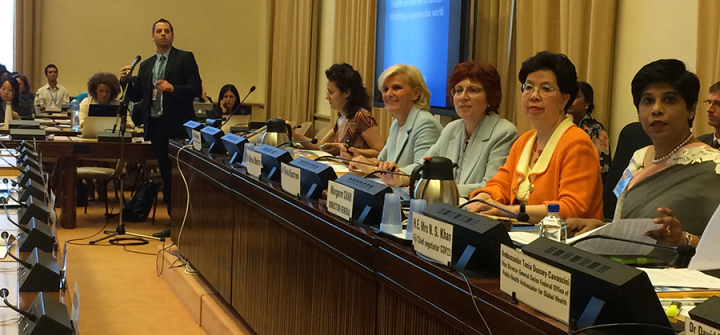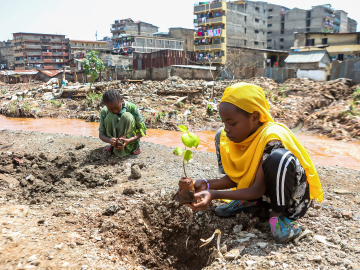“The Most Important Endangered Species?” Humans.
GENEVA – Nearly a quarter of all deaths worldwide are linked to environmental issues. That’s 12.6 million deaths every year, according to WHO.
“Human beings really are the most important endangered species,” said Margaret Chan, WHO’s outgoing Director-General. The “harsh reality” is that the world is losing its capacity to sustain human life, and the health sector cannot provide all the solutions, Chan told an audience of more than 200 during a May 26 technical briefing on health and the environment at the World Health Assembly.
“The health sector can count the deaths and raise the alarm but the health sector alone cannot tackle the root causes of these risks because they are largely in other sectors … nonhealth sectors. In order to improve or mitigate the risk, we need to work with other sectors and partners to get their policy right,” said Chan.
The necessity for a multisectoral response that involves industry, agriculture, NGOs, local communities and others is reflected in the 17 Sustainable Development Goals (SDGs)—7 of which are connected to the environment, Chan said. From climate change and air pollution to land degradation and fresh water scarcity, the challenges are considerable. “All these have a significant impact on health,” she said.
Climate change in particular is already having a major effect on health in vulnerable island countries, said N.S. Khan, the chief negotiator for the COP-23 climate talks and Fiji’s permanent representative to the UN in Geneva.
“We know in Fiji about the relationship between climate change and health,” Khan said, noting that extremes of rain and drought have been tied to increases in cases of infant diarrhea.
Another great challenge, according to Khan: Bridging the gaps between WHO’s efforts in environment and health and the UN Framework Convention on Climate Change process. She pointed to the Paris climate change agreement’s acknowledgment of health as a human right as evidence of the need link health and climate change efforts. “We need to work harder on this connection,” she said.
Chemicals production and management present other key environmental health issues. Even Switzerland with its snow-capped Alps faces considerable environmental challenges: The country’s pharmaceutical and chemical industries produce millions of tons of chemicals per year, said Tania Dussey-Cavasini, Switzerland’s Ambassador for Global Health.
Despite its reputation, Switzerland hasn’t always enjoyed pristine alpine lakes. Decades ago, swimming pools began to ring the Lake Geneva because it wasn’t safe to swim in, she said. “What you see today is the result of 40 years of political effort,” she said.
Globally, decades of work have yielded numerous resolutions, treaties and conventions on water, sanitation and other environmental issues—yet insufficient action, Dussey-Cavasini said.
“Basically what it boils down to is, do we have the political will to act?” she said, urging individuals to at least take small steps that can trigger wider change.
Dussey-Cavasini suggested one possible motivator that countries may draw on for political action on chemicals in the environment: male infertility. “Infertility among men is one impact of chemicals on health. If men know they can get more infertile because of chemicals, maybe that would be more incentive to move forward,” she said, drawing applause.
Want more info on #WHA70? See all of GHN’s #WHA70 coverage here, and follow us on Twitter and Facebook.
Join the thousands of subscribers who rely on Global Health NOW summaries and exclusive articles for the latest public health news. Sign up for our free weekday enewsletter, and please share the link with friends and colleagues: Subscribe to GHN
Chief negotiator for the COP-23 climate talks N.S. Khan (right), WHO Director-General Margaret Chan and others open a May 26, 2017 environment and health meeting. Image / Brian W. Simpson





